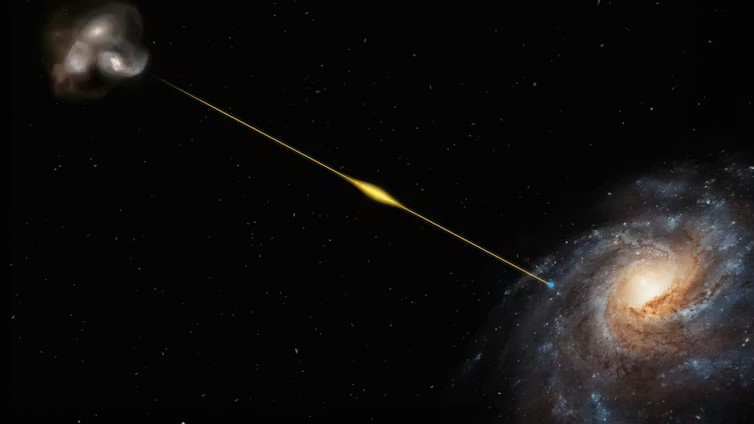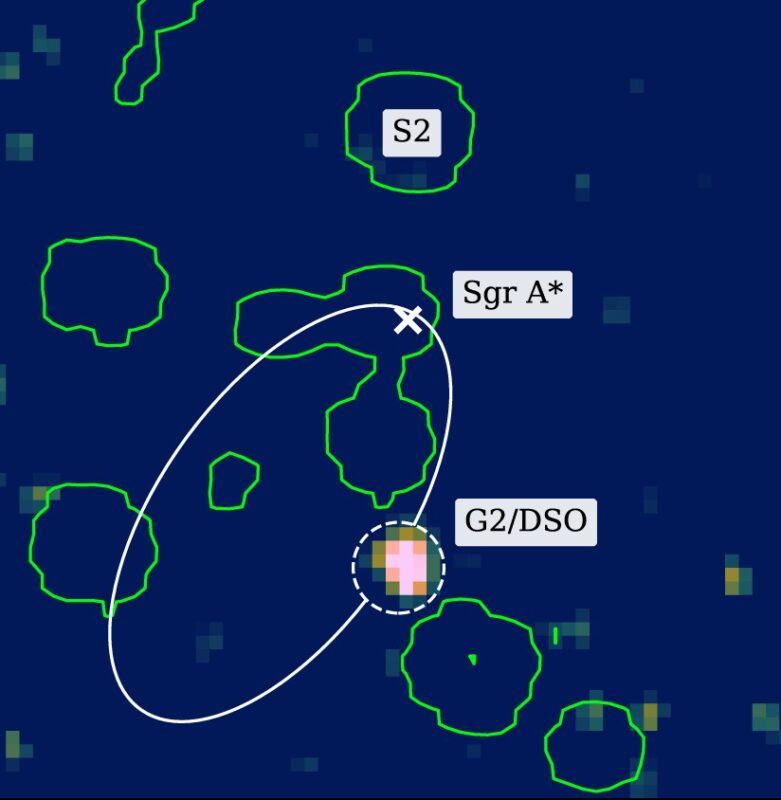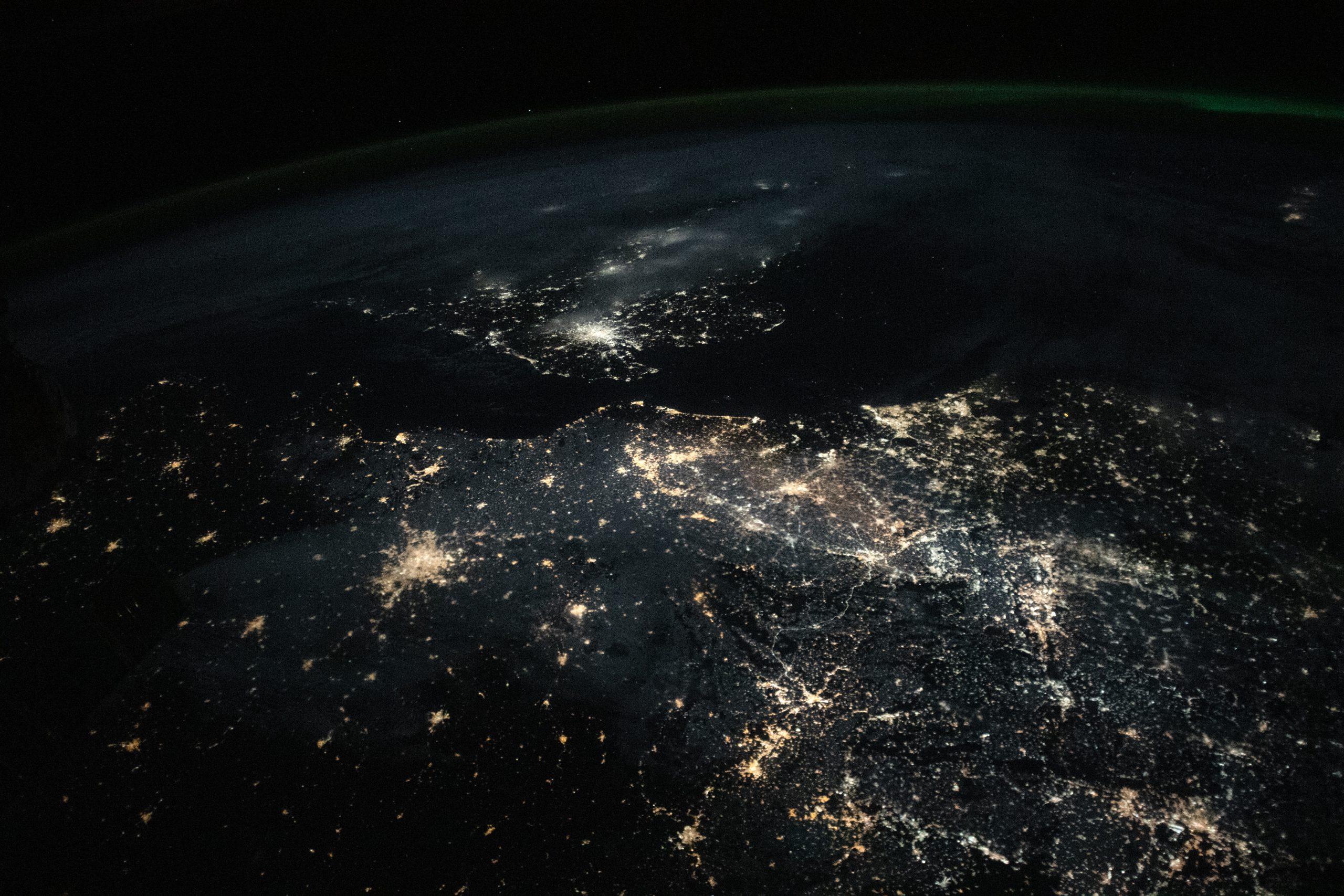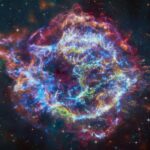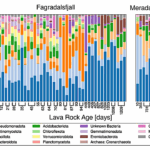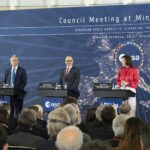Now Reading: Probing the cosmic Dark Ages from the far side of the moon
-
01
Probing the cosmic Dark Ages from the far side of the moon
Probing the cosmic Dark Ages from the far side of the moon
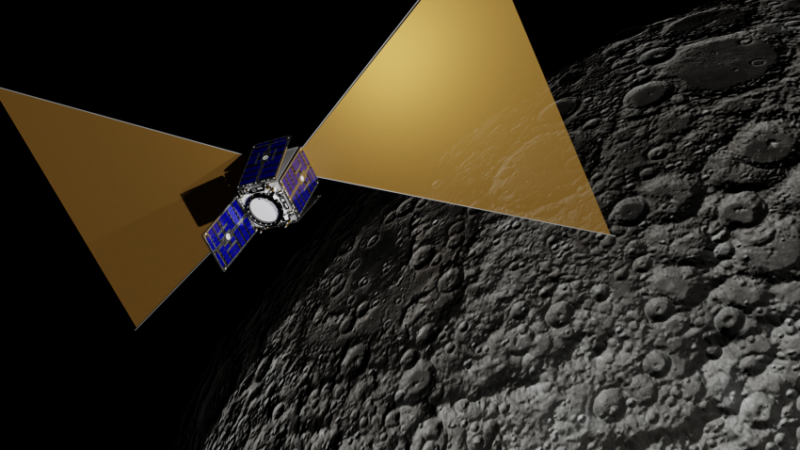

- To detect ancient whispers from the cosmic Dark Ages – the years after the Big Bang – we need a radio telescope in a quiet place.
- On Earth, our electronics – from wifi to cell phones and more – create noise that makes it very hard to hear the ancient whispers.
- The newly proposed CosmoCube mission would visit the far side of the moon. In this quiet location it could detect the radio signals from the early universe.
The Royal Astronomical Society published this original article on July 9, 2025. Edits by EarthSky.
Probing the cosmic Dark Ages from the far side of the moon
Astronomers want to unlock the secrets of the early universe by sending a miniature spacecraft to listen for an ancient whisper from the far side of the moon. The proposed mission will study the very early universe, right after the Big Bang. During these Dark Ages, the universe was still quite dark and empty and the first stars and galaxies had not yet appeared. But to probe the cosmic Dark Ages, silence is essential. And Earth is a noisy place for radio signals, with interference from our atmosphere and all our electronics.
Eloy de Lera Acedo of the University of Cambridge presented the proposal on July 9, 2025, at the Royal Astronomical Society’s National Astronomy Meeting 2025 in Durham, U.K. De Lera Acedo said:
It’s like trying to hear that whisper while a loud concert is playing next door.
This makes it really hard to pick up those faint signals from billions of years ago. To detect a special radio signal that comes from hydrogen – the first, most basic and most abundant chemical element – in the early universe, we need it to be quiet.
That’s why we’re proposing to send a small satellite to orbit the moon and detect a signal that could hold clues about how everything began and how structures like galaxies eventually formed.
CosmoCube would venture to the moon’s far side
The U.K.-led CosmoCube mission would observe from the far side of the moon. The moon acts like a giant shield, blocking out all the radio noise from Earth.
This would create a clear, quiet spot to listen for an ancient whisper. And the findings would let us learn more about the universe’s Dark Ages and Cosmic Dawn, periods that are currently largely unexplored. De Lera Acedo said:
By doing this, CosmoCube aims to help us better understand how our universe transformed from a simple, dark state to the complex, light-filled cosmos we see today, with all its stars and galaxies.
Crucially, it will also help scientists investigate the mysterious dark matter and its role in shaping these cosmic structures.

How it will work
CosmoCube will feature a precision-calibrated, low-power radio radiometer operating from a low-cost satellite platform in lunar orbit. It would operate at low frequencies (10–100 MHz), engineered to detect extremely faint signals amidst a sea of noise.
The mission could help shed light on the Hubble tension. The Hubble tension refers to the discrepancy in the measured expansion rate of the universe, specifically between the value based on observations of the early universe and value related to observations of the local universe.
It may also provide insights into dark matter-baryon interactions and the physics of the early universe. (Dark matter-baryon interactions are potential non-gravitational interactions between dark matter particles and ordinary matter.)
This so-called Dark Ages period is one of the last unexplored frontiers in observational cosmology. The pre-stellar epoch offers a pristine view into the formation of structure, the properties of dark matter, and early cosmic evolution.
Using radio waves to hear the cosmic Dark Ages
Fellow CosmoCube researcher David Bacon, from the University of Portsmouth, said:
It’s incredible how far these radio waves have traveled, now arriving with news of the universe’s history.
The next step is to go to the quieter side of the moon to hear that news.
CosmoCube is supported under the U.K. Space Agency’s Science Bilateral Programme. A U.K.-led international consortium with researchers based at the University of Cambridge, University of Portsmouth and STFC RAL Space is developing the program.
Instrument development is well under way, with functioning lab prototypes and environmental testing taking place and key collaboration with industry partners, such as SSTL Ltd, developing the space platform and mission concept.
The team behind the project is planning for a four to five year roadmap to launch, with the goal of reaching lunar orbit before the end of the decade.
Bottom line: Researchers are designing a mission called CosmoCube to travel to the far side of the moon, an area of radio silence, in order to listen to whispers from the cosmic Dark Ages.
Source: CosmoCube: Probing the Cosmic Dark Ages with a Miniature Radiometer in Lunar Orbit
Via Royal Astronomical Society
The post Probing the cosmic Dark Ages from the far side of the moon first appeared on EarthSky.
Stay Informed With the Latest & Most Important News
Previous Post
Next Post
-
 012024 in Review: Highlights from NASA in Silicon Valley
012024 in Review: Highlights from NASA in Silicon Valley -
 02Panasonic Leica Summilux DG 15mm f/1.7 ASPH review
02Panasonic Leica Summilux DG 15mm f/1.7 ASPH review -
 03How New NASA, India Earth Satellite NISAR Will See Earth
03How New NASA, India Earth Satellite NISAR Will See Earth -
 04And Thus Begins A New Year For Life On Earth
04And Thus Begins A New Year For Life On Earth -
 05Astronomy Activation Ambassadors: A New Era
05Astronomy Activation Ambassadors: A New Era -
 06From Polymerization-Enabled Folding and Assembly to Chemical Evolution: Key Processes for Emergence of Functional Polymers in the Origin of Life
06From Polymerization-Enabled Folding and Assembly to Chemical Evolution: Key Processes for Emergence of Functional Polymers in the Origin of Life -
07SpaceX launch surge helps set new global launch record in 2024












